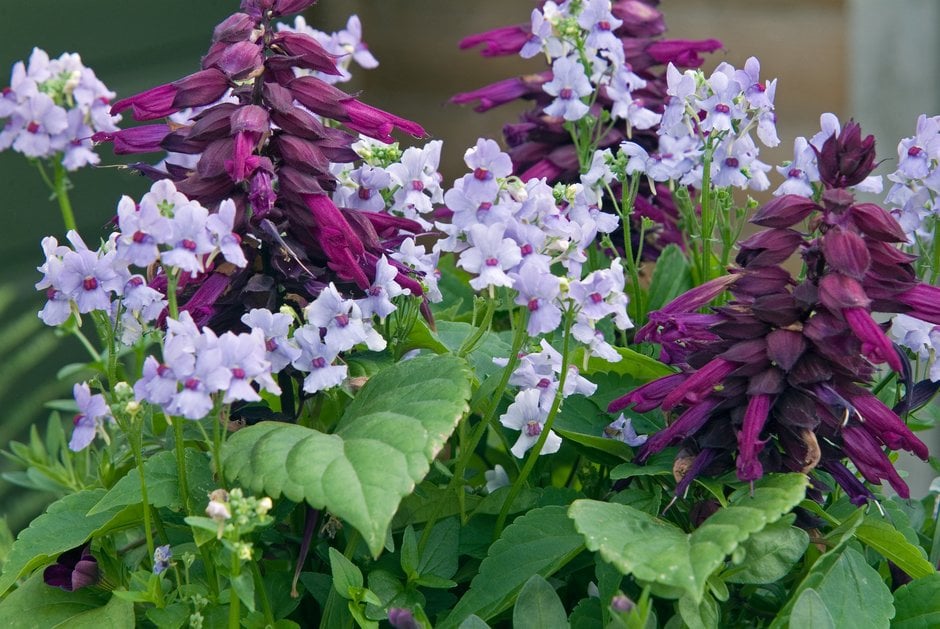Salvia splendens 'Scarlet Sage'
scarlet sage
A compact, upright perennial usually grown as an annual, with oval leaves and dense spikes of tubular scarlet flowers with large red bracts, over a long period in summer and autumn
Synonyms
Salvia splendens 'Scarlet Sage'
Buy this plant
Size
Ultimate height
0.1–0.5 metresTime to ultimate height
1–2 yearsUltimate spread
0.1–0.5 metresGrowing conditions
Moisture
Moist but well–drained, Well–drainedpH
Acid, Alkaline, NeutralColour & scent
| Stem | Flower | Foliage | Fruit | |
| Spring | Green | |||
|---|---|---|---|---|
| Summer | Red | Green | ||
| Autumn | Red | Green | ||
| Winter |
Position
- Full sun
Aspect
South–facing or East–facing
Exposure
Exposed or Sheltered Hardiness
H1CBotanical details
- Family
- Lamiaceae
- Native to GB / Ireland
- No
- Foliage
- Deciduous
- Habit
- Bushy
- Genus
Salvia can be annuals, biennials, herbaceous or evergreen perennials, or shrubs. They have paired, simple or pinnately lobed, often aromatic leaves and 2-lipped flowers in whorls, forming simple or branched spikes or racemes
- Name status
Correct
- Plant range
- S. America
How to grow
Cultivation
Grow in fertile, moist but well-drained, soil in full sun. Pinch out young growth to encourage bushiness. Water in dry weather
Propagation
Propagate by seed sown at 15-18°C in spring
Suggested planting locations and garden types
- City and courtyard gardens
- Cottage and informal garden
- Patio and container plants
- Coastal
- Mediterranean climate plants
- Flower borders and beds
- Garden edging
Pruning
Cut back faded flower spikes after flowering
Pests
May be susceptible to slugs
Diseases
May be susceptible to honey fungus (rarely), powdery mildews, verticillium wilt and foot and root rots
Love gardening
Sign up to receive regular gardening tips, inspiration, offers and more
View our Privacy Policy
Get involved
The Royal Horticultural Society is the UK’s leading gardening charity. We aim to enrich everyone’s life through plants, and make the UK a greener and more beautiful place.